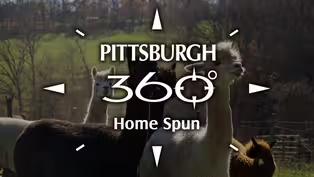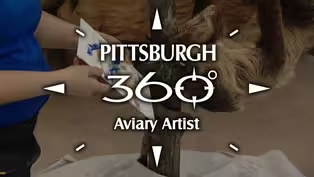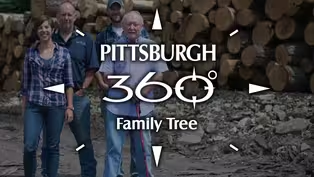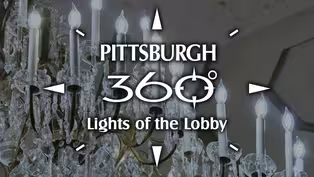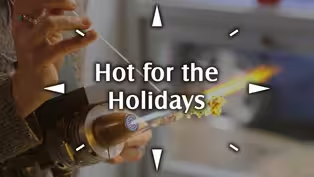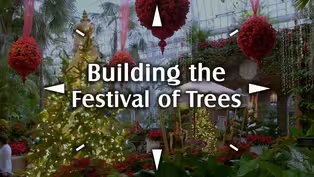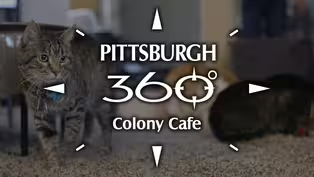
Wondrous Wildlife
3/9/2020 | 7m 49sVideo has Closed Captions
Tour this unique exhibition, "National Geographic: 50 Greatest Wildlife Photographs."
Come along as WQED tours "National Geographic: 50 Greatest Wildlife Photographs." The unique exhibition at the Carnegie Museum of Natural History until May 25th is a celebratory look at animals in their natural habitats around the world.
Problems playing video? | Closed Captioning Feedback
Problems playing video? | Closed Captioning Feedback
More Local Stories is a local public television program presented by WQED

Wondrous Wildlife
3/9/2020 | 7m 49sVideo has Closed Captions
Come along as WQED tours "National Geographic: 50 Greatest Wildlife Photographs." The unique exhibition at the Carnegie Museum of Natural History until May 25th is a celebratory look at animals in their natural habitats around the world.
Problems playing video? | Closed Captioning Feedback
How to Watch More Local Stories
More Local Stories is available to stream on pbs.org and the free PBS App, available on iPhone, Apple TV, Android TV, Android smartphones, Amazon Fire TV, Amazon Fire Tablet, Roku, Samsung Smart TV, and Vizio.
Providing Support for PBS.org
Learn Moreabout PBS online sponsorshipMore from This Collection
Video has Closed Captions
This farm and fiber mill processes its own farm-grown alpaca fiber to create products. (3m 43s)
Video has Closed Captions
A unique exhibit is exploring how contemporary Black hairstyles are tied to tradition. (5m 45s)
Video has Closed Captions
Recently, the aviary's "Valentino," the drawing sloth, is getting a lot of attention. (5m 39s)
Video has Closed Captions
In Washington County, a family farm has been making wreaths for more than three decades. (4m 49s)
Video has Closed Captions
Four generations of the Hickman family have become a world-wide distributor of top-quality (6m 49s)
Video has Closed Captions
Efforts are underway in Monongahela to renovate a landmark home built in 1872. (8m 22s)
Video has Closed Captions
A request from Saint Emma Monastery became sculpture Cliff Dupil's biggest challenge. (7m 39s)
Video has Closed Captions
See the ceremonial spectacle for three crystal chandeliers at this historic hotel. (6m 55s)
Video has Closed Captions
The late Mac Miller will be forever remembered for his music, and now in a work of art. (2m 4s)
Video has Closed Captions
Visit the Pittsburgh Glass Center - where the public is invited to learn and create. (4m 21s)
Building the Festival of Trees
Video has Closed Captions
Take a behind-the-scenes look at building the Festival of Trees at Phipps Conservatory. (4m 51s)
Video has Closed Captions
Visit a bistro, bar and cat cafe in where you can enjoy a food, drink and the company of c (4m 9s)
Providing Support for PBS.org
Learn Moreabout PBS online sponsorship(exotic drum music) - Every picture in this show has an incredible story of perseverance, of bravery, of adventure, and of adversity.
(exotic drum music) - This show is called "National Geographic: 50 Greatest Wildlife Photographs."
(exotic drum music) My name is Becca Shreckengast.
I'm Director of Exhibition Experience at the Natural History Museum.
(exotic drum music) This exhibition features some of the best wildlife photographers who are taking images right now.
And we're so excited to be able to bring them to our Pittsburgh audience, to see animals in their habitats like we've never seen them before.
(exotic drum music) Orangutans in the highest treetops, to see whales under the water.
(exotic drum music) To see the closeup movement of lions on the hunt.
(exotic drum music) It is these types of encounters that help us build empathy, to build storytelling, and we do see, even in some of these photographs, sort of a change, where we have, for so long, liked to see wildlife as separate from humans.
So no longer is the separation between humans and nature, but a cooperative life on earth with the wildlife.
(exotic drum music) - I'm Kathryn Keane.
I am the Director of the National Geographic Museum.
(African odyssey music) This exhibition is a collection of the greatest wildlife images that National Geographic has featured in its iconic magazine.
There are 15 million images in the National Geographic archive and that number just keeps growing.
With the advent of digital photography, sometimes a photographer in the field will bring back 30, 40 thousand images and it is the role of the photography editor and the editorial staff of the magazine to whittle that assignment work down to the few images that end up on our digital Website, or in the magazine, itself.
It took months to come up with this list.
As you look around the room and you see these pictures that are taken all over the world, these are not easy jobs.
These photographers go to great lengths to get these pictures.
Our editorial staff has a very high standard and, "They don't publish excuses," is their famous line.
(African odyssey music) Every picture in this exhibition is taken in the wild and there might be a few exceptions, so we wanna show nature at its most extreme and at its most natural.
- None of the light we're using is visible to the cats.
- So Nick Nichols was a staff photographer at National Geographic for over 25 years and one of his more recent assignments was to capture these lions in the Serengeti Lion Project.
So what's so interesting about this image as you look at it is how close the camera got to this pride of female lions.
Many images that you see of lions in Africa are taken from a moving vehicle, or they're taken from the air.
Nick decided he wanted to get a much closer shot and so he created this camera trap and put it on wheels, and he drove this vehicle up to the pride.
And they sniffed it and were a little suspicious of it at first, but once they realized that it wasn't gonna hurt them and that they couldn't eat it, they just kind of forgot about it and he got these incredible images.
- [Nick] This is not the way they reacted the first 10 times we put this out, so this has been a process.
(dynamic orchestral music) - [Becca] I think every photograph is composed and planned by a photographer.
They aren't faked, they aren't contrived in that they're sort of like a bunch of Photoshop work going on that would change the story.
But like any artist and photographer, they're gonna use sort of the digital tools and photographing tools that they have available to them.
(camera shutter snapping) (dynamic orchestral music) To bring out a texture, to soften something in the background, they've help bring focus and narrow the storytelling so the photograph can speak to the story the photographer is trying to tell.
I really love the whale photograph.
And there is a human hand breaking the plane of the water.
And you can see the magnitude of scale between this whale and this human hand.
These gray whales actually want attention, otherwise they'd lose interest and go to another boat.
(dynamic orchestral music) - Each picture has a bit of a different adventure and I don't have a favorite.
It's like asking me to pick my favorite child, right?
(dynamic orchestral music) Telling stories about the natural world is part of our history, it's in our DNA, but I think what we're coming to learn is that the planet is under increasing threat and what we have been hearing from the people that we send out into the field is that they are really seeing the changes that are affecting our planet, changes brought about by climate change, changes brought about by deforestation and over-population.
So I think the fact that we are pivoting the focus more on the urgency of these issues makes this all the more important for us to put together these projects and send these stories out into the world.
(dynamic music) - I teach a 20th century art history course, so we're here today with a field trip, 30 kids, and two chaperones, and it's a full day.
- We had a great opening day.
We had over a thousand people enter this gallery.
Now, we have greater than average visitation to the gallery and people spend a lot of time here.
(inspiring electronic music) - A lot of people think its very easy to take a picture.
You can use your iPhone, you can just pop it out.
But looking at this exhibit, I'm hoping that the kids can see that this is a valid art form.
- I was expecting photographs, wild animals, but the angles, the perspective that they've taken to get these photographs are phenomenal.
(inspiring electronic music) - I really liked this exhibit.
I like how everything, like, all the pictures, they're very pure and untouched because you can't stage this type of stuff.
(uplifting music) - So, more exhibits like this, more exhibits where people who are encountering wildlife, the threats that humans are making to these environments so that they can process it, become curious, motivated, and then empowered to make changes in the world.
(inspiring music) - This exhibition is very much about the power of photography to educate and to get people to care about the planet that we all share, and that is very much a part of our mission to use this kind of storytelling to not only inspire people, but to educate the next generation.
(inspiring music)
Support for PBS provided by:
More Local Stories is a local public television program presented by WQED
